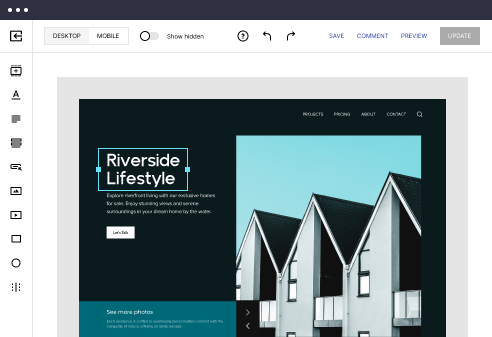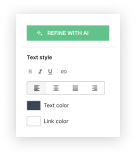
Angular.js Optimized One Page Website Template
Explore Similar TemplatesAbout template
Create a stunning one-page website effortlessly with our Angular.js optimized template. Benefit from a responsive design, easy customization, and seamless integration for your marketing needs.
Recommended templates
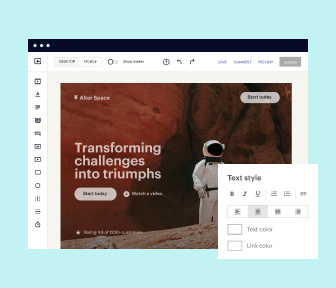
Easy to build without coding
With the intuitive drag-and-drop builder, anyone on your team can create high-converting pages without any knowledge of code or design. Make enhancements to your landing page with custom widgets using Javascript, HTML/CSS, or third-party scripts.
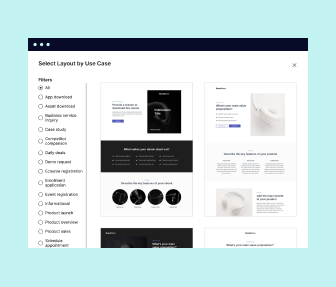
Multiple layouts for any industry and goal
Select from 500+ landing page layouts built to boost conversions across industry-specific scenarios. Customize them by adjusting fonts, adding images, and generating on-brand content with the AI assistant. Quickly scale with Instablocks® and Global Blocks that you can save, reuse, and update globally.
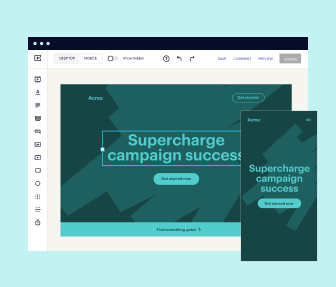
Loads fast and looks polished on any device
Every template is responsive, which means they present professionally on any device and load blazingly fast with our Thor Render Engine. You can also power them up with Google AMP technology to deliver an unparalleled mobile experience and drive higher conversions.
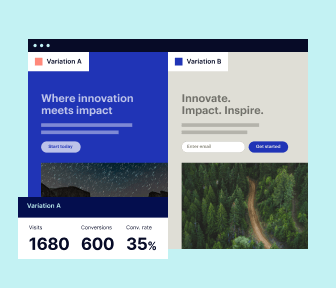
Robust analytics & experimentation
Get real-time updates and reporting across all your devices, showing the number of visitors, conversions, cost-per-visitor, and cost-per-lead. Launch AI-powered experiments, run A/B tests, and use heatmaps to analyze user behavior, then optimize your landing page to maximize conversions.

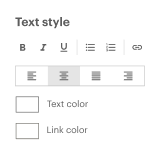
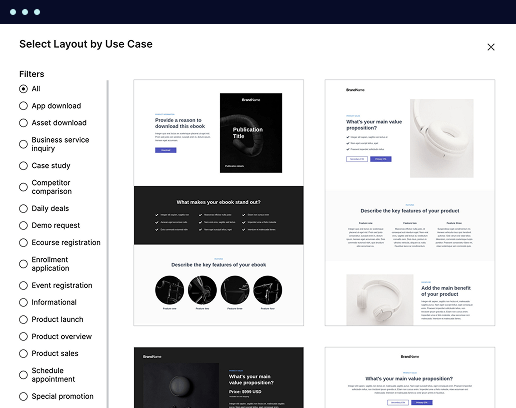
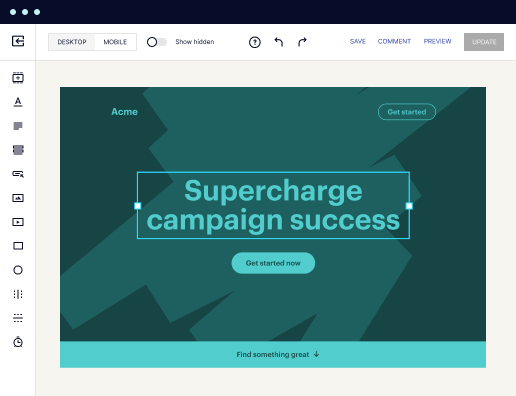
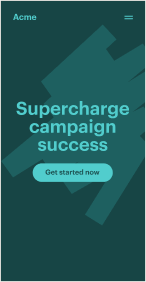
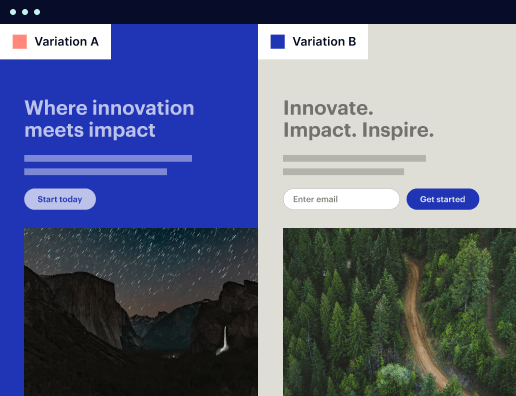

Easy to build without coding
With the intuitive drag-and-drop builder, anyone on your team can create high-converting pages without any knowledge of code or design. Make enhancements to your landing page with custom widgets using Javascript, HTML/CSS, or third-party scripts.
Multiple layouts for any industry and goal
Select from 500+ landing page layouts built to boost conversions across industry-specific scenarios. Customize them by adjusting fonts, adding images, and generating on-brand content with the AI assistant. Quickly scale with Instablocks® and Global Blocks that you can save, reuse, and update globally.
Loads fast and looks polished on any device
Every template is responsive, which means they present professionally on any device and load blazingly fast with our Thor Render Engine.
Robust analytics & experimentation
Get real-time updates and reporting across all your devices, showing the number of visitors, conversions, cost-per-visitor, and cost-per-lead. Launch AI-powered experiments, run A/B tests, and use heatmaps to analyze user behavior, then optimize your landing page to maximize conversions.
All the features you need to build angularjs website template
Explore more featuresLearn how to build angularjs website examples
Frequently asked questions about free angularjs template
Leading the way in building high-performing landing pages





Angular 4 website templates free: Your ultimate how-to guide
Instapage is the most powerful landing page and CRO platform available today. With its robust features, marketers can accelerate, optimize, scale, and maximize the ROI of their campaigns effectively. This guide details how to leverage Instapage’s capabilities to enhance your marketing strategy.
Understanding the Importance of Landing Pages
Landing pages play a crucial role in digital marketing by providing targeted experiences that convert visitors into leads. Instapage enables marketers to create high-converting landing pages in mere minutes. By understanding audience behavior through detailed heatmaps and analytics, businesses can tailor their pages for better performance.
- High-converting templates: Instapage offers 100+ ready-to-use templates designed for various industries, ensuring that marketers have the best tools for capturing attention.
- Flexible and intuitive platform: Users can quickly build landing pages without needing advanced technical skills or coding knowledge.
- A/B testing capabilities: Marketers can easily execute experiments to determine which page designs yield the highest conversion rates.
Steps to Create Your First Landing Page
Creating a landing page with Instapage involves a few straightforward steps. Here’s a simple guide to get you started:
- Choose a template: Start by selecting from the extensive library of conversion-focused layouts tailored to your business’s specific needs.
- Customize your page: Use Instapage’s drag-and-drop editor to personalize your content and design, integrating lead generation elements as needed.
- Preview and publish: Always preview your landing page to ensure everything looks perfect before publishing it to drive traffic.
Optimizing Your Landing Page for Better Results
Once your landing page is live, optimization should continue. Here are some tactics to enhance your page further:
- Implement A/B testing: Regularly test different versions of your landing pages to find out what resonates best with your audience.
- Analyze user interactions: Use heatmaps to see where users are clicking and adjust your content accordingly to better engage them.
- Integrate personalized elements: Utilize dynamic text replacement to deliver customized experiences that can significantly boost conversion rates.
By following these steps, you're on your way to creating impactful landing pages that drive conversions.
In conclusion, Instapage provides a comprehensive solution for businesses looking to enhance their landing page performance and drive results.
Get started with Instapage today and leverage the tools at your disposal to transform your marketing campaigns efficiently.
AngularJS optimized one page website template: Enhancing user experience and development efficiency
I. Understanding AngularJS and its role in modern web development
In recent years, AngularJS has emerged as a leading framework in web development, especially for building single-page applications (SPAs). SPAs allow for a smoother user interaction as they load content dynamically without requiring a full-page refresh. Unlike traditional multi-page applications that load entire new pages, SPAs focus on loading a single HTML page and dynamically updating it based on user interactions. This shift not only influences user experience but also significantly impacts the speed and feel of web applications.
The advantages of SPAs are numerous: they can offer faster load times, reduce the amount of data transferred, and provide a more responsive feel. Users benefit from quicker navigation, reduced waiting times, and overall improved satisfaction, which can lead to higher conversion rates. As more businesses recognize these benefits, the importance of frameworks like AngularJS becomes even more pronounced.
A. The emergence of single-page applications (SPAs)
Definition: SPAs are web applications that load a single HTML page and dynamically update it as the user interacts.
Comparison: Unlike traditional multi-page apps, SPAs minimize server requests and enhance user experience by reducing page reloads.
Advantages: Faster navigation, improved performance, and simplified user experience.
B. Introduction to AngularJS
AngularJS stands out in the landscape of front-end frameworks. It is a powerful JavaScript framework maintained by Google that facilitates the development of SPAs. The framework's popularity can be attributed to its features, which include a strong templating mechanism, dependency injection, and robust data binding tools. These features enable developers to build rich web applications with enhanced data management capabilities and integration flexibility.
Core components of AngularJS include modules, controllers, and services. Modules are crucial for organizing the application into manageable sections, controllers handle the data and business logic, and services allow for the sharing of data and functions across the application. Moreover, AngularJS's data binding feature minimizes the amount of boilerplate code, enabling developers to create more maintainable applications.
C. Use cases for AngularJS in web applications
Rapid application development: AngularJS speeds up the development process with its built-in features.
Enhanced interactivity: Businesses can offer improved interactive features such as forms, charts, and real-time data updates.
Streamlined user interfaces: AngularJS aids in designing user-friendly interfaces suitable for dynamic applications.
II. The anatomy of an optimized AngularJS one page website template
Creating an optimized AngularJS one-page template requires understanding several key features and design elements that align with best practices in modern web design. Responsiveness is certainly a priority, as users access web applications across a plethora of devices and screen sizes. An optimized template integrates responsive design principles to ensure all users have a seamless experience.
The HTML structure of the template should be modular, allowing for easier scalability and maintainability. This modular design can facilitate future updates and improvements, making it much easier to adapt to changing business needs. By implementing dynamic routing, developers can also ensure smooth navigation across different views without reloading the whole page, further enhancing the user experience. Lastly, efficient state management is critical for improving the overall performance of the web application.
A. Key features and design elements
Responsive design principles ensure the website is accessible across various devices.
Modular HTML structure allows for quick updates and scalability.
Dynamic routing provides seamless transitions between different sections.
State management optimizes performance and enhances user interactions.
B. Integrating quality assurance services
When developing an AngularJS website, it is crucial to integrate robust quality assurance services. Testing becomes indispensable to ensure the application operates as intended and meets user expectations. This can include a variety of techniques such as unit tests, which verify individual components, and end-to-end tests, which assess the entire application flow. Using these methods helps catch issues early in the development process.
Numerous tools and libraries are available to streamline the quality assurance process in AngularJS development. These include frameworks like Jasmine for unit testing and Protractor for end-to-end tests. Employing such testing mechanisms not only improves product quality but also enhances developer confidence, allowing teams to iterate rapidly while minimizing potential bugs.
III. Enhancing user experience with AngularJS
User experience is a vital factor in the success of any web application over time. To enhance this experience in AngularJS applications, developers can implement several speed and velocity optimizations. For instance, utilizing lazy loading of modules ensures that only the necessary parts of the application are loaded initially, which can significantly improve load times. This strategy is particularly beneficial for larger applications where minimal initial loading can greatly affect user satisfaction.
Additionally, code splitting can further enhance performance by dividing the code into smaller chunks. This allows users to access features as they navigate through the app instead of waiting for the entire application to load. Coupling these strategies with effective caching mechanisms can lead to faster data retrieval and interactive elements, creating a more fluid experience for users.
A. Speed and velocity optimizations
Lazy loading of modules ensures that only essential parts load initially.
Code splitting allows users to access various application features without significant delays.
Caching strategies improve data retrieval and overall application performance.
B. UX/UI best practices for one page applications
UX/UI considerations are paramount when designing an AngularJS one-page application. Employing material design principles can significantly enhance the visual appeal and usability of the application. Material design focuses on creating intuitive layouts, which makes it easier for users to navigate through content. Planning navigation with users’ needs in mind can also provide a more satisfactory experience, ensuring they find what they need quickly, thereby increasing engagement.
Moreover, enhancing accessibility features will ensure that the application caters to a wider audience. Practices such as semantic HTML, proper ARIA roles, and keyboard navigation support are essential for compliance with accessibility standards. By focusing on these best practices, developers can create an inclusive experience that resonates with users and meets their needs.
IV. Serverless architecture and its integration with AngularJS
Serverless architecture is gaining traction among developers for modern applications, including those built with AngularJS. By defining serverless technologies, we refer to frameworks that allow developers to execute background services without the need to manage servers directly. This can significantly reduce infrastructure overhead and simplify deployment processes. The use of services like AWS Lambda or Firebase allows developers to focus on core application logic instead of system maintenance.
By combining AngularJS with serverless technologies, developers can create highly scalable applications without incurring unnecessary costs. This not only streamlines the deployment of applications but also provides cost-effective scaling options for high traffic scenarios. Real-world case studies demonstrate the efficacy of this approach, where businesses have leveraged serverless architectures to enhance application performance and user experience.
A. Exploring serverless technologies
Serverless architecture reduces infrastructure management overhead and simplifies deployment.
Popular backends for AngularJS templates include AWS Lambda and Firebase.
B. Building robust web applications without server management
The advantages of serverless architecture extend beyond initial setup ease; it significantly aids in building robust web applications. Developers can simplify deployment processes, allowing for quicker transitions from development to production. This setup also allows for cost-effective solutions as companies only pay for the resources utilized during function execution, an appealing model for startups and established businesses alike.
With minimal overhead, scaling becomes a breeze under high traffic conditions. This means that customer experiences remain uninterrupted, leading to consistent engagement. Several case studies showcase successful AngularJS applications built on serverless architecture, highlighting tangible benefits such as improved load times, increased user retention, and enhanced performance metrics.
V. Development workflow and best practices
Implementing an effective development workflow for AngularJS projects is integral to maintaining quality and efficiency. Utilizing the right tools and frameworks can streamline the coding process. Recommended IDEs and code editors, such as Visual Studio Code or WebStorm, provide robust features that enhance productivity. Additionally, incorporating CSS frameworks like Bootstrap or Materialize alongside AngularJS can help developers maintain consistency in design performance.
Version control practices such as Git become equally important, allowing teams to collaborate seamlessly and maintain code integrity. Emphasizing best practices not only fortifies the development process but also lays the foundation for future iterations.
A. Tools and frameworks in AngularJS development
Recommended IDEs include Visual Studio Code and WebStorm for enhanced development productivity.
CSS frameworks like Bootstrap or Materialize complement AngularJS for a consistent design.
Version control tools, particularly Git, ensure collaborative development and maintain code integrity.
B. Collaborative development strategies for organizations
Collaboration is key for successful project outcomes, especially in larger organizations. Adopting agile methodologies promotes rapid development cycles and adaptability. Additionally, utilizing project management tools such as JIRA or Trello encourages team alignment and transparency throughout the development process. Code review strategies are essential as well, facilitating knowledge transfer and maintaining quality across the codebase.
Furthermore, fostering a culture of documentation and knowledge-sharing can significantly enhance collaboration among development teams. This practice aids in onboarding new team members and ensuring everyone is informed about the latest updates and best practices.
VI. Real-world examples and case studies
To truly understand the impact of optimized AngularJS one-page website templates, examining real-world examples provides valuable insights. Numerous industries utilize these templates effectively—for instance, e-commerce platforms that rely on fast, interactive experiences to drive sales. A well-structured AngularJS one-page template can significantly enhance conversion rates, customer retention, and overall user satisfaction.
Metrics gathered from these applications often showcase impressive results, such as improved user engagement and decreased bounce rates. By analyzing success stories, businesses can identify useful patterns that inform best practices in their own implementation strategies.
A. Successful implementations of AngularJS one page templates
E-commerce applications that offer streamlined shopping experiences.
Portfolio websites that showcase work with engaging layouts.
User interface applications that benefit from AngularJS's reactive capabilities.
B. Feedback and iteration in template optimization
Feedback and iteration play a vibrant role in optimizing templates. Utilizing user analytics tools helps organizations identify areas in need of modification, ensuring that user preferences are accommodated over time. Implementing A/B testing further aids in fine-tuning features for increased effectiveness, allowing organizations to determine which elements resonate most with their audience.
Such iterative processes not only enhance user experience but also ensure that business objectives are met consistently.
VII. Future trends in AngularJS development
As technology continues to evolve, staying ahead of trends in AngularJS development is essential for developers seeking to leverage its full potential. The rise of Progressive Web Applications (PWAs) signifies a significant shift towards applications that blur the lines between web and mobile capabilities, offering enhanced functionality. Through progressive features such as offline support, push notifications, and fast load times, PWAs offer an experience akin to native apps, making them increasingly desirable.
Developers can anticipate continuous updates and enhancements in AngularJS to accommodate these shifts, thereby maintaining its relevance within the framework ecosystem. The demand for more responsive and efficient frameworks reinforces the necessity for ongoing development and adaptation.
A. Evolving web technologies and their impact on SPAs
The rise of PWAs is shaping user expectations and redefining engagement.
Predictions for AngularJS updates include improved performance and integration capabilities.
B. The AngularJS community and ongoing learning
Engagement with the AngularJS community is crucial for developers to remain current with the latest tools, technologies, and trends. Numerous forums, online courses, and documentation resources exist to support continuous learning. Many developers actively contribute to the evolution of AngularJS by sharing insights, tools, and solutions, further enriching the community’s potential.
Staying connected within this ecosystem enhances individual and team skill sets, facilitating effective collaboration on AngularJS projects and promoting innovation.
VIII. Concluding insights on AngularJS and one page optimization
In conclusion, the benefits of adopting an optimized AngularJS one-page template are well-established. The framework provides a solid foundation for developing efficient and responsive web applications that significantly enhance user engagement. Developers who implement these templates can expect improved development speed, efficiency, and ultimately, enhanced user satisfaction.
Encouraging innovation and experimentation within the framework can lead to new and improved web applications, creating opportunities for creativity in design and functionality while catering to diverse user needs.
A. Synthesizing benefits of an optimized AngularJS template
Enhances development speed and efficiency through built-in features and modular structure.
Delivers long-term advantages for web applications through improved speed, performance, and user satisfaction.
B. Encouraging innovation and experimentation
As the web landscape continues to evolve, developers are called to push the boundaries of what can be achieved within the AngularJS framework. By fostering a culture of innovation, teams can explore new technologies, experiment with design strategies, and create unique solutions tailored to their audience's needs. This spirit of creativity ultimately leads to a bolder, more engaging web experience for users across various industries.
Ready to skyrocket conversions?
Supercharge your ad campaigns with high-performing landing pages
Get started